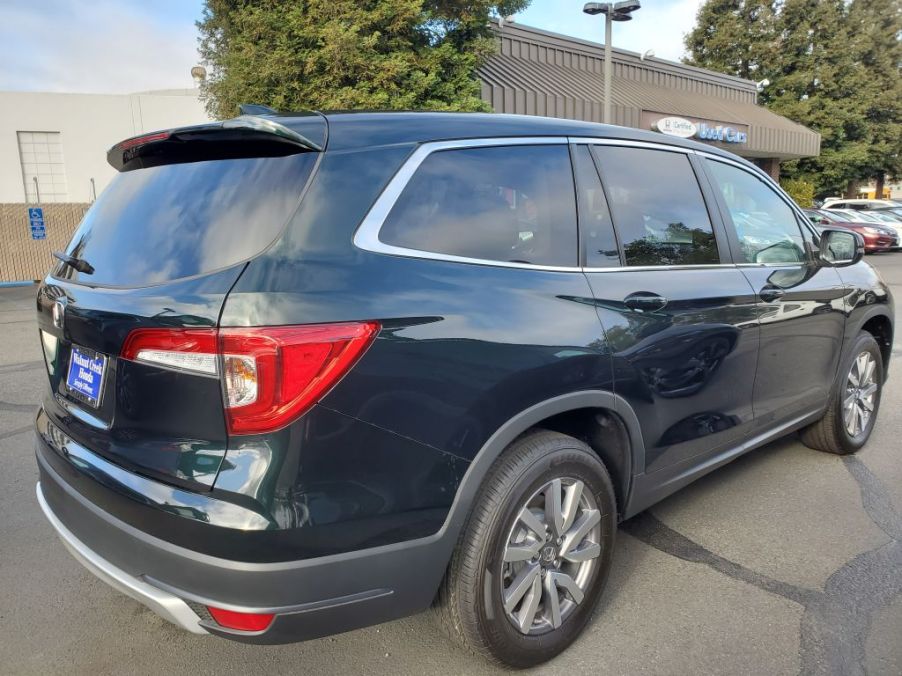
How Reliable Is the Honda Pilot?
Since hitting salesroom floors in 2003, the Honda Pilot has received generally favorable reviews for its safety features and reliability. With the introduction of Apple CarPlay and Android Auto in 2017, the automaker has definitely focused on keeping the midsize three-row SUV current.
Has Honda sacrificed reliability with so much focus on technology? The model continues to rank about average in its class according to U.S. News & World Report; however, each year seems to renew the struggle to reach the highest tiers.
The uh-oh in the 2020 Honda Pilot’s reliability score
Consumer Reports has reported one recall by the National Highway Traffic Safety Administration (NHTSA) for the 2020 Pilots. The upper members of the front right and left frame “have not been completely welded to the unibody.”
Found to run the risk of not offering occupants adequate protection in a crash, Honda is notifying owners and arranging inspections. Depending on the outcome, the dealer will either repurchase the vehicle or offer a replacement with a similar model.
The Pilot’s overall reliability score
Prior to the NHTSA issuing a recall, the administration had rated the 2020’s crash test a five out of five. The Insurance Institute for Highway Safety (IIHS) had also ranked the 2019 as a Top Safety Pick thanks to the range of driver-assisted safety technology features that come standard on all trim levels.
Honda Pilot’s warranty and maintenance coverage rating again places the 2020 model in the average category for its class. Although there is no complimentary scheduled maintenance, Honda does provide a limited three-year, 36,000-mile warranty. The powertrain warranty extends to six years or 60,000 miles.
Notes on piloting the 2020 Honda Pilot
The Pilot delivers a comfortable ride that offers quick responsiveness. Conversely, handling can feel a bit awkward due to its size, especially when cornering.
While the 18-inch wheels on the lower trim levels offer a smooth ride, the upper trim package’s 20-inch wheel creates an overly firm connection with the surface.
The 3.5-liter, V-6 engine standard on all models delivers more-than-capable power with 280 hp and 262 lb-ft of torque.
Honda solved previous transmission issues and smoothed out the rough shifting with recalibration. The result is a six-speed automatic standard on the lower three trim packages and a nine-speed automatic beginning with the Touring model that create an engaging and fun excursion.
Honda’s strength is in its safety features
The Honda Sensing suite of high-tech safety features is one of the reasons the automaker consistently scores in the mid-to-upper range for reliability.
Standard on all trim levels, the driver-assisted features include adaptive cruise control, road departure mitigation system, collision mitigation braking system, and lane-keeping assist system. All models above the base LX also include cross-traffic monitoring and blind-spot warning.
Additionally, the NHTSA ranked both the front-wheel and all-wheel drive versions with a five out of five stars.
The Pilot remains MPG competitive
The fuel economy may be on consumers’ lists of least favorite attributes, but considering the Pilot’s body and engine size, it’s impressively efficient.
The FWD six-speed version delivers 19 mpg city and 27 highway while its nine-speed counterpart arrives at 20 city/27 highway. The AWD equipped with the six-speed automatic gives up 1 mpg, coming in at 18 city/26 highway. The Black Edition, however, surprisingly gains 1 mpg in the city to settle at 19 and 26.
Final thoughts
Honda continues in its tradition of providing a solid reliable vehicle with its 2020 Pilot. It does have some shortcomings that would make it worthwhile to compare other vehicles in its class before making a final decision. However, the general consensus is it’s a solid choice.


